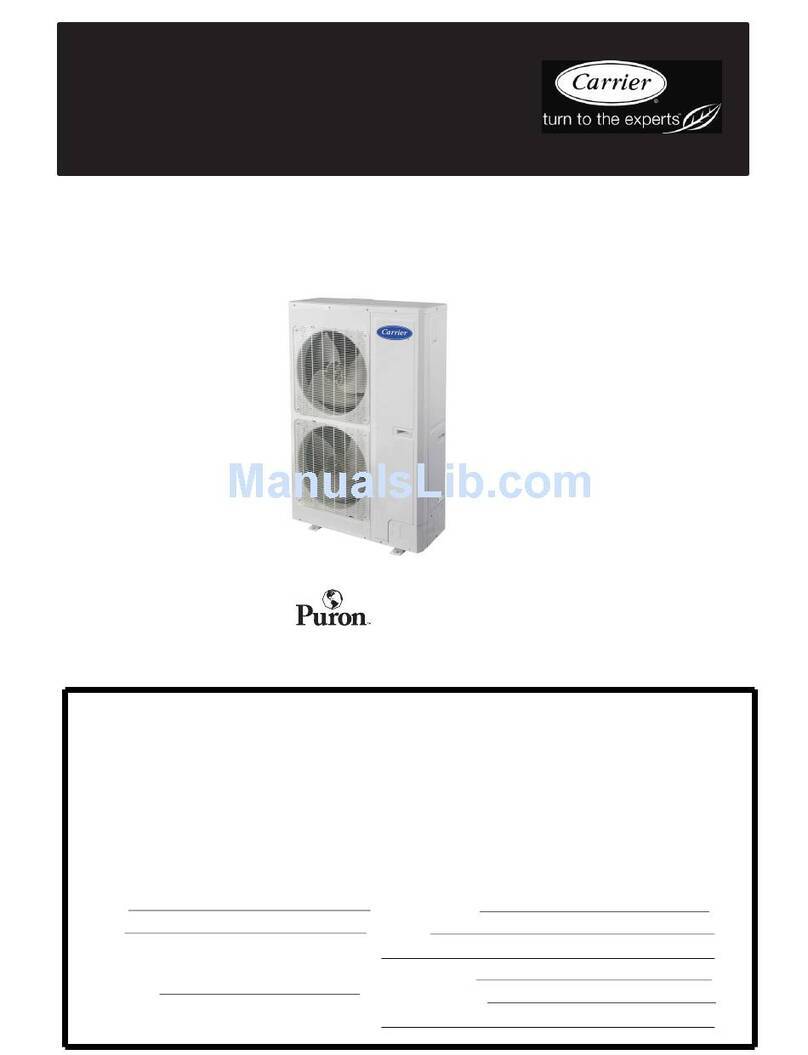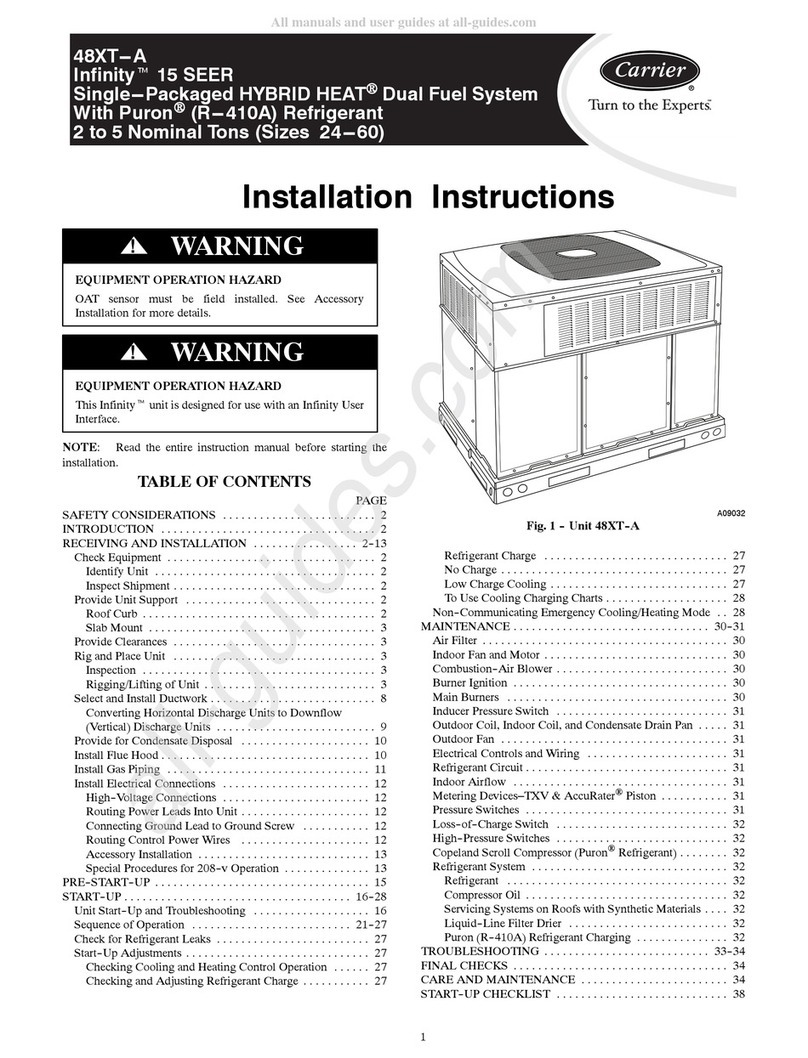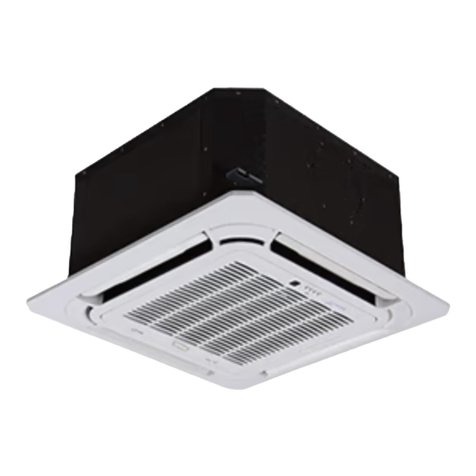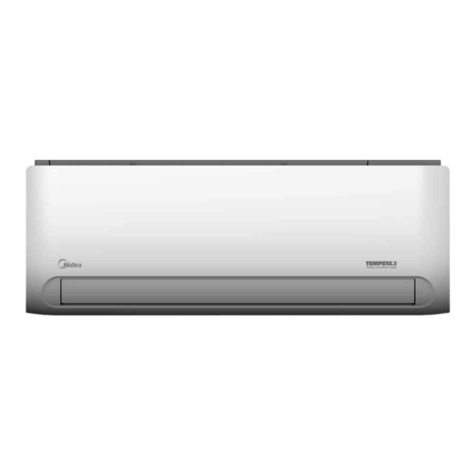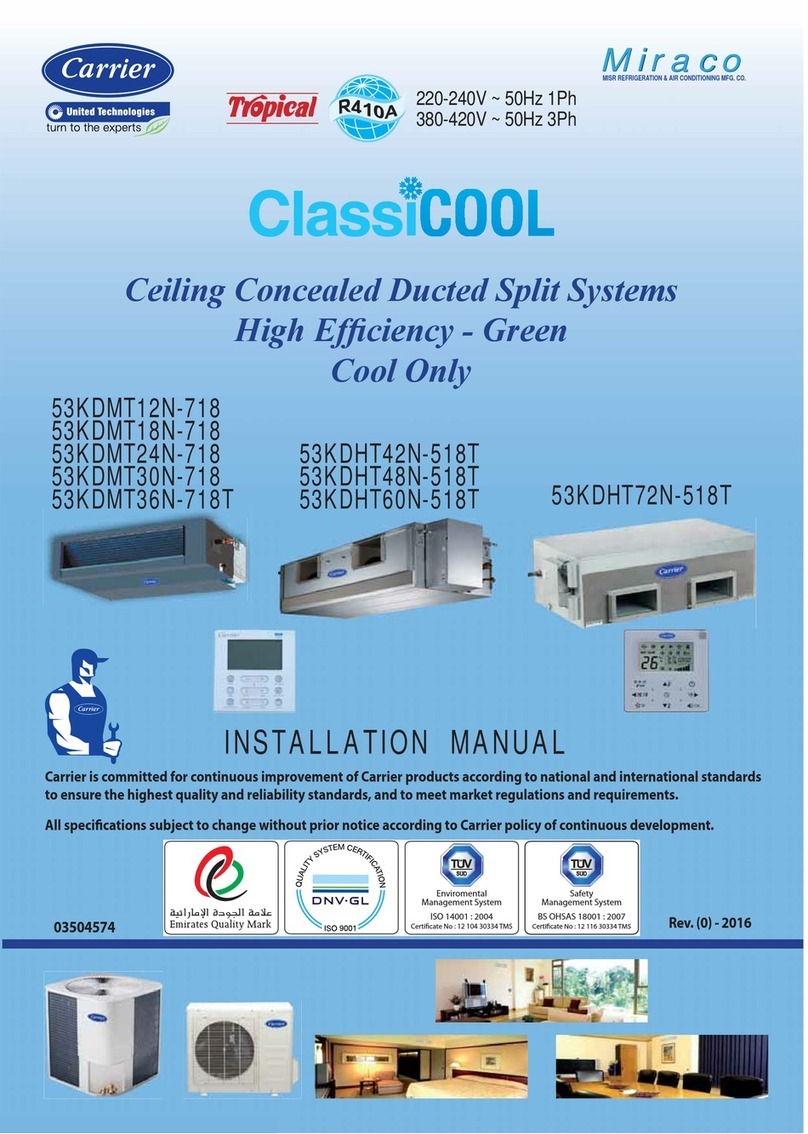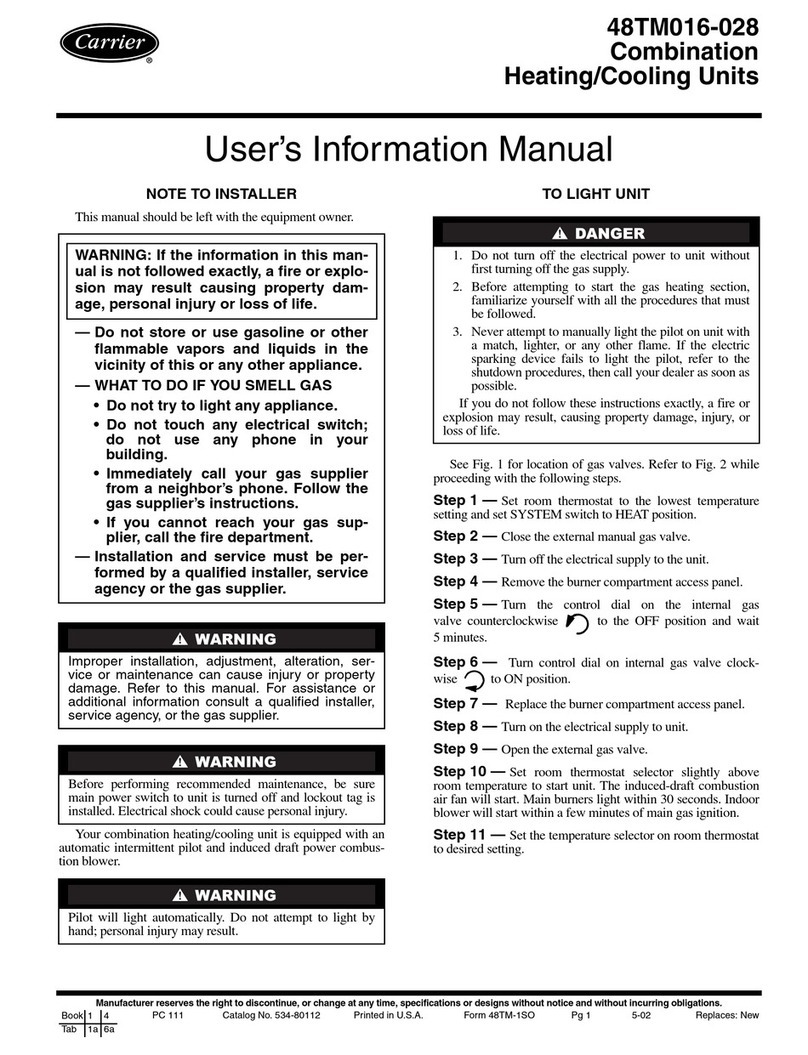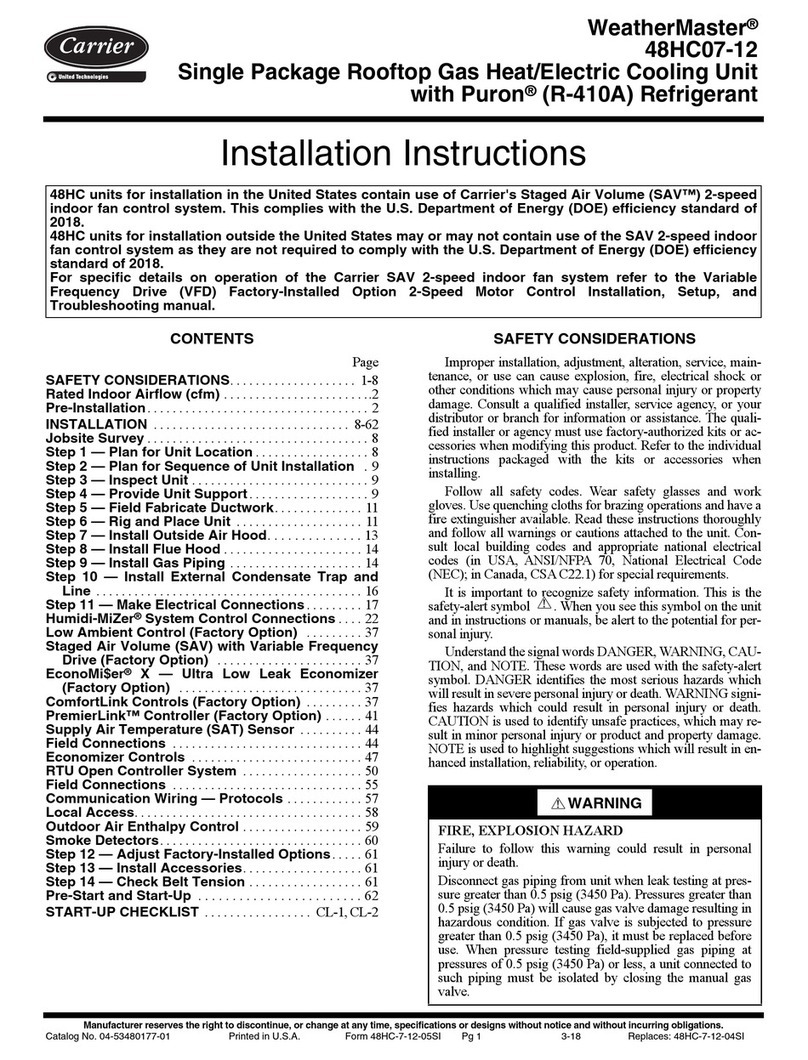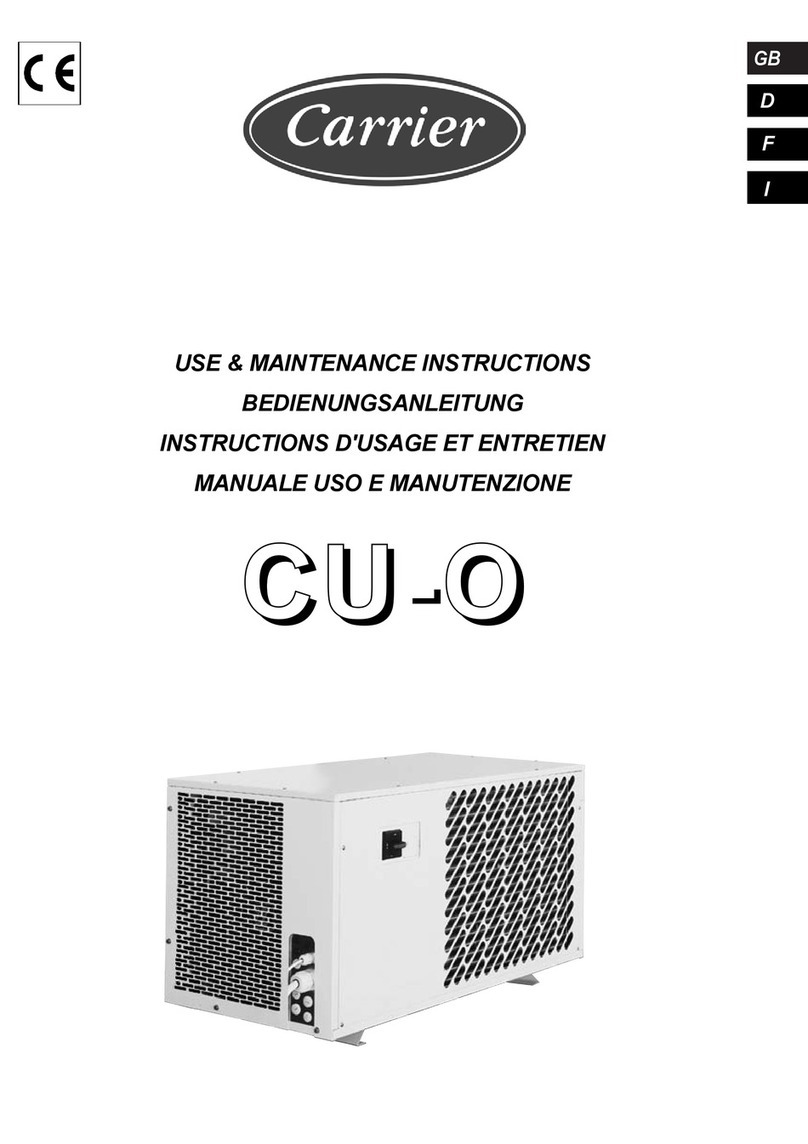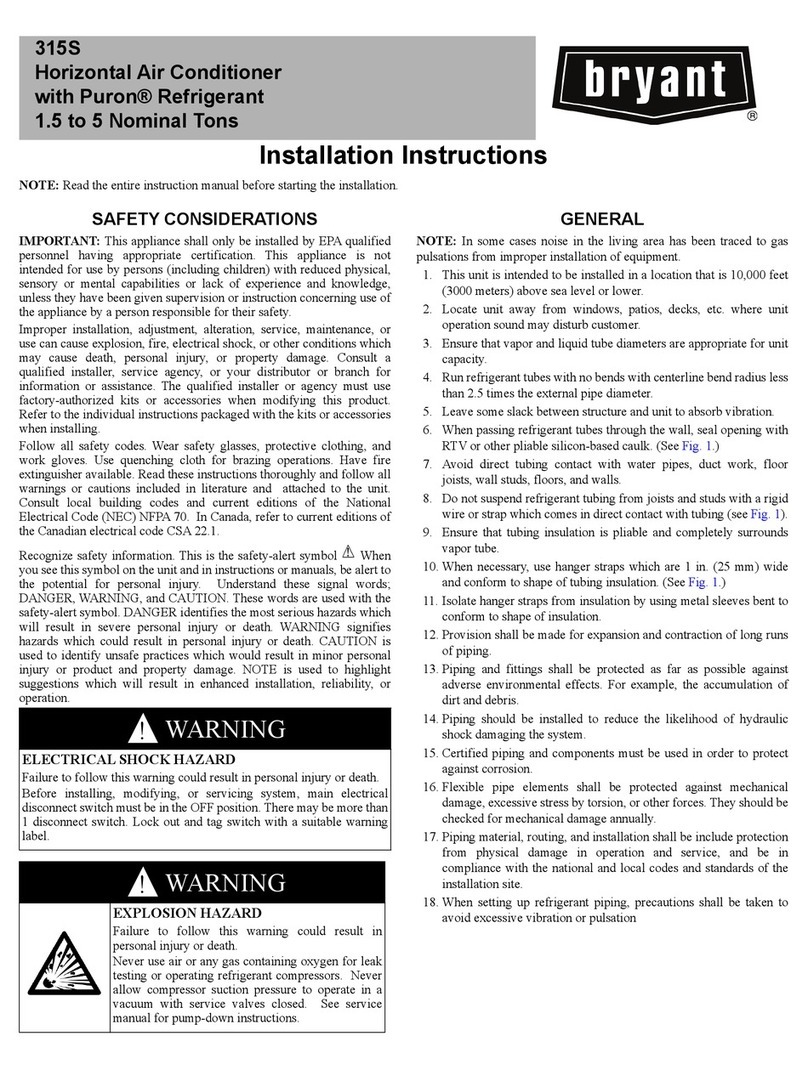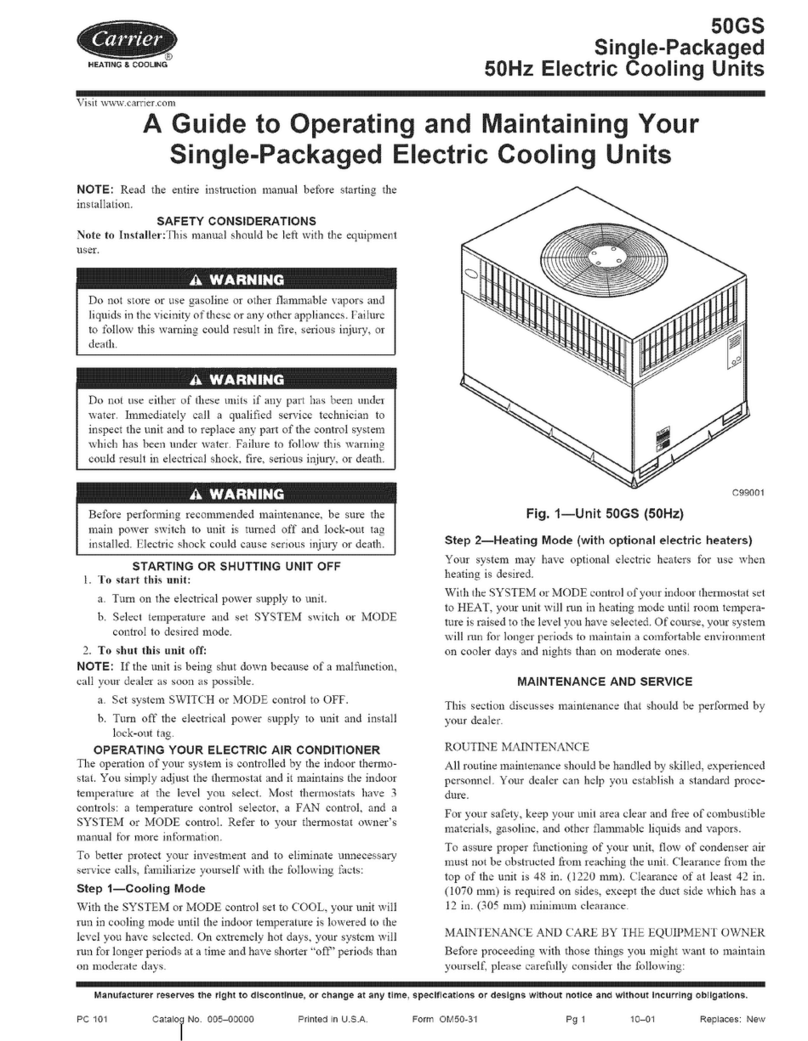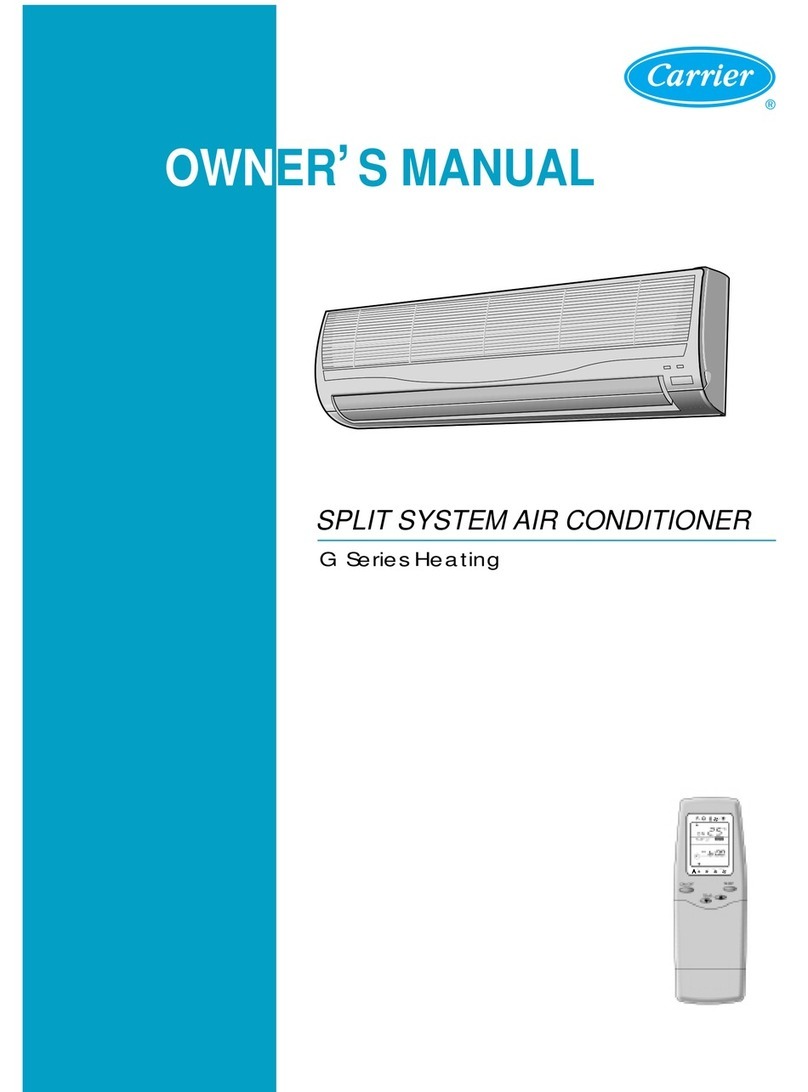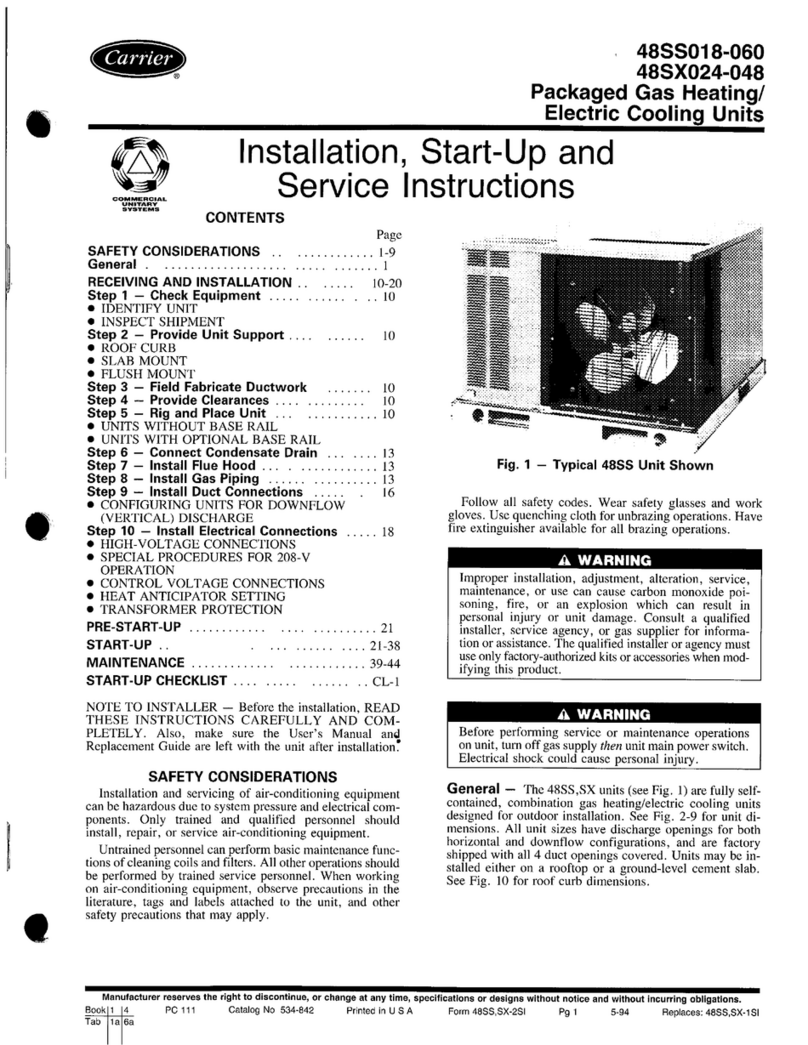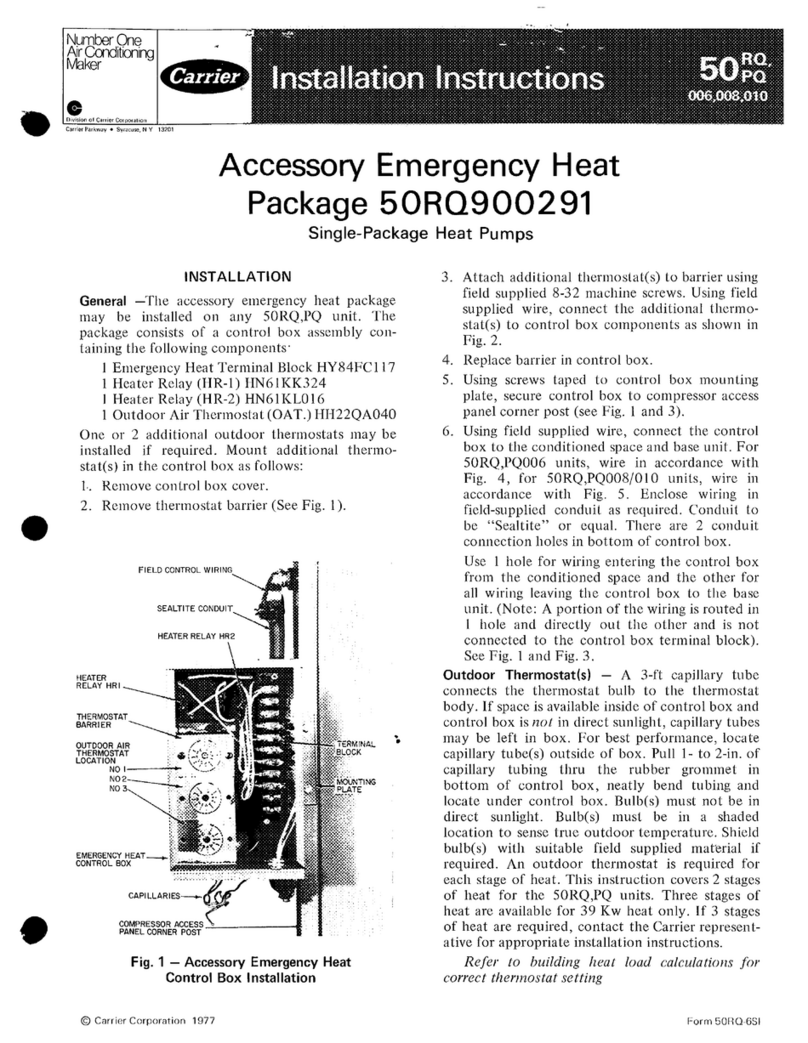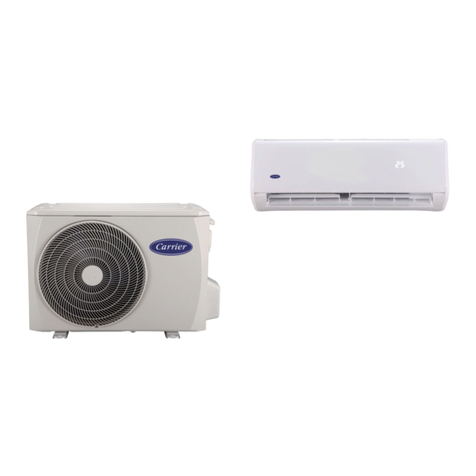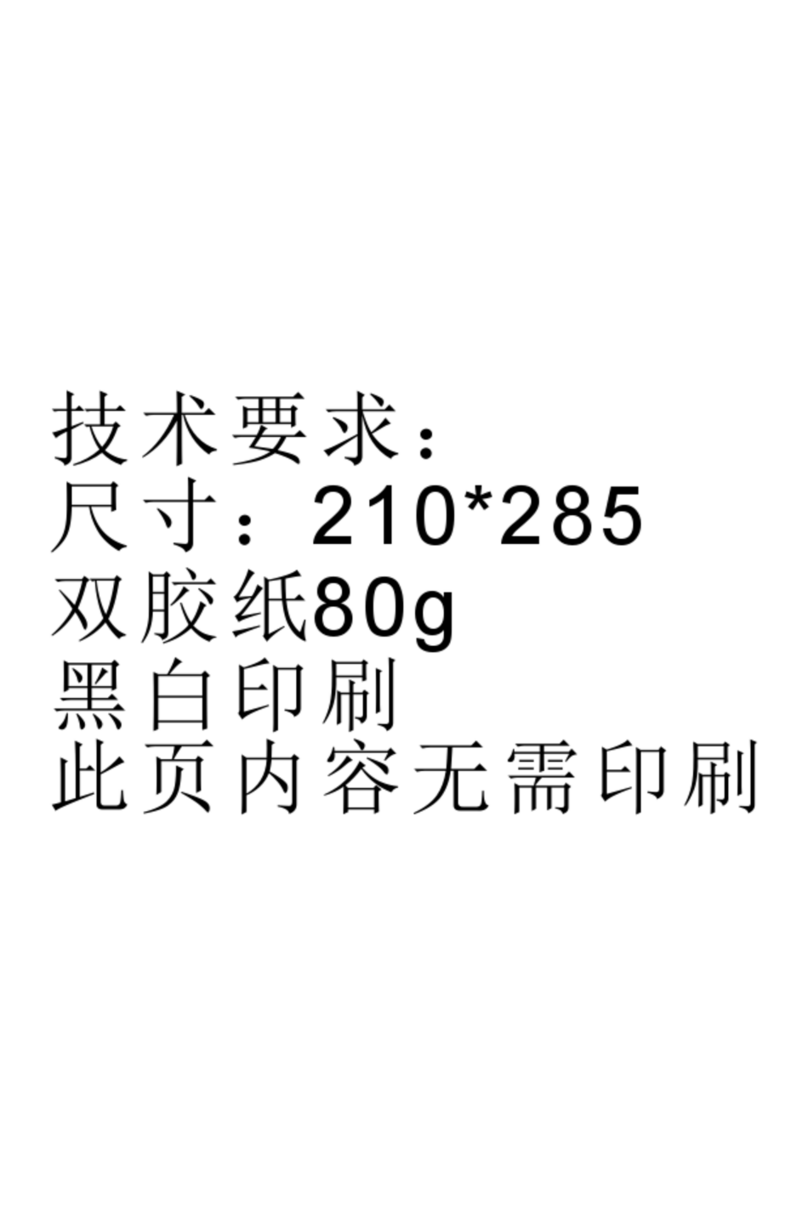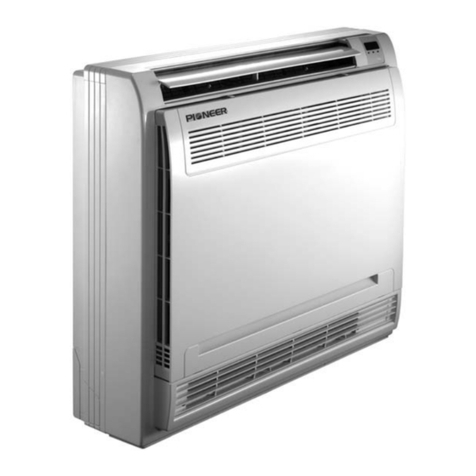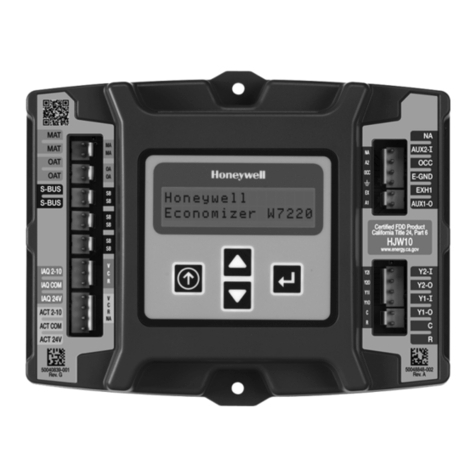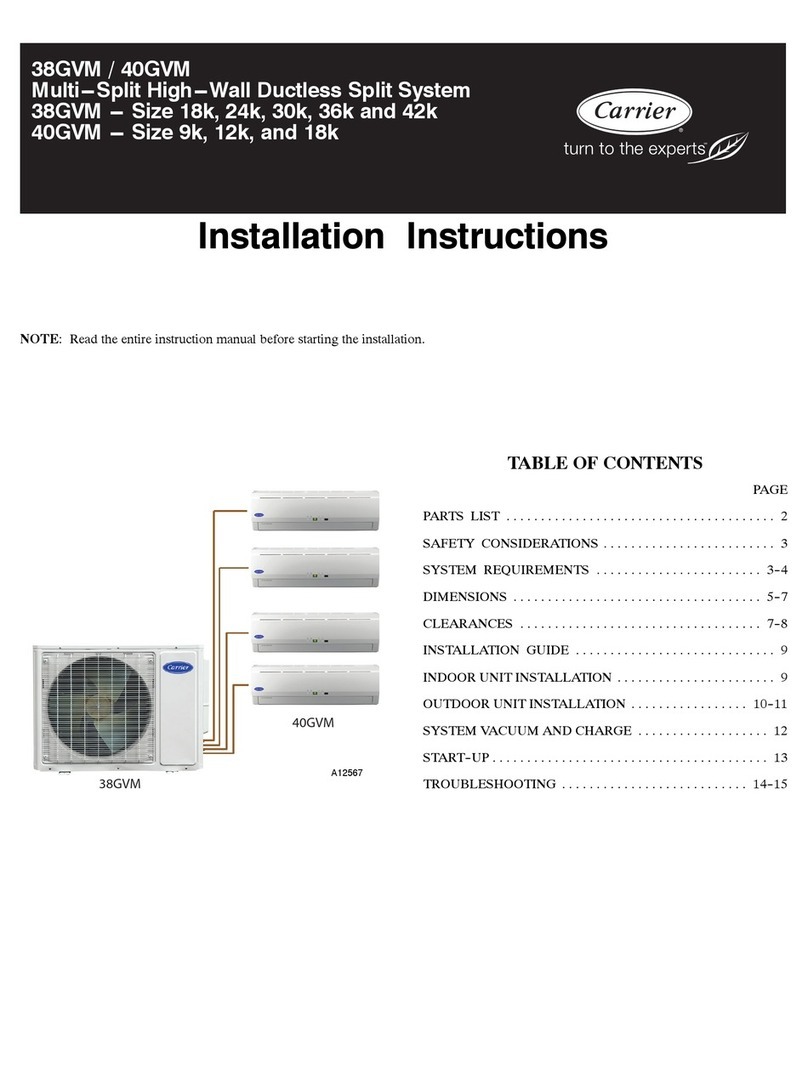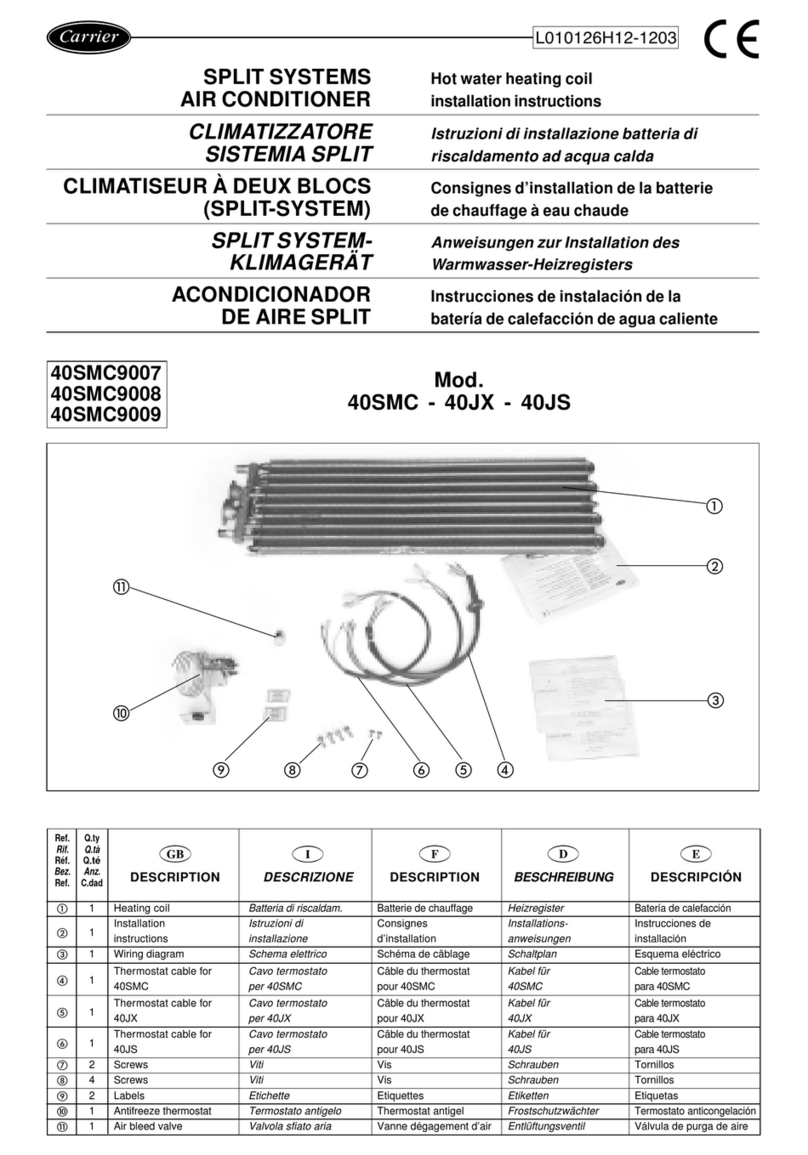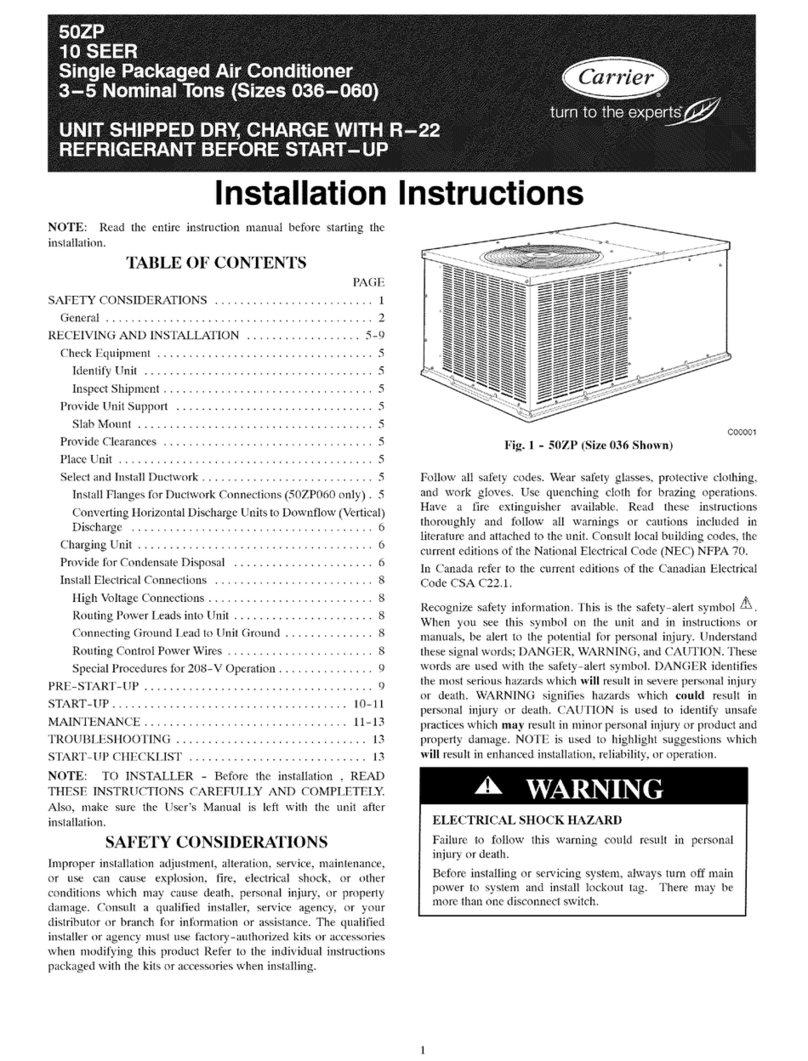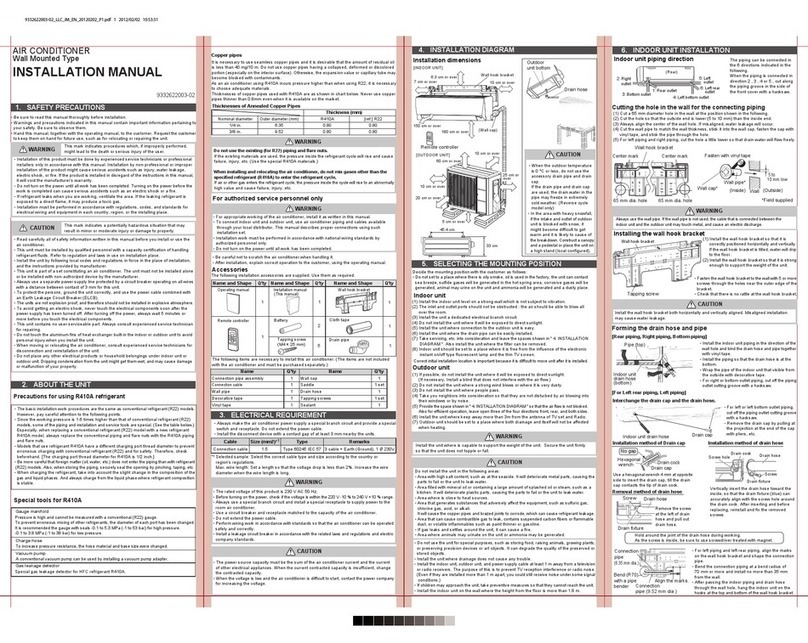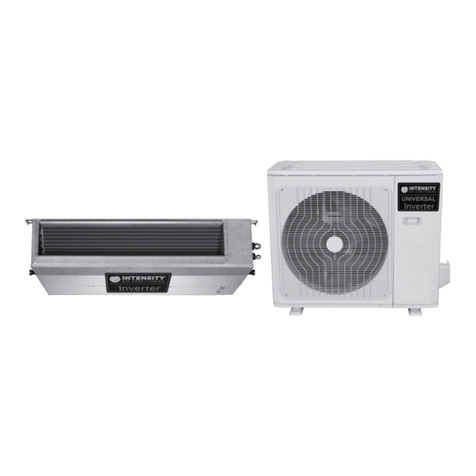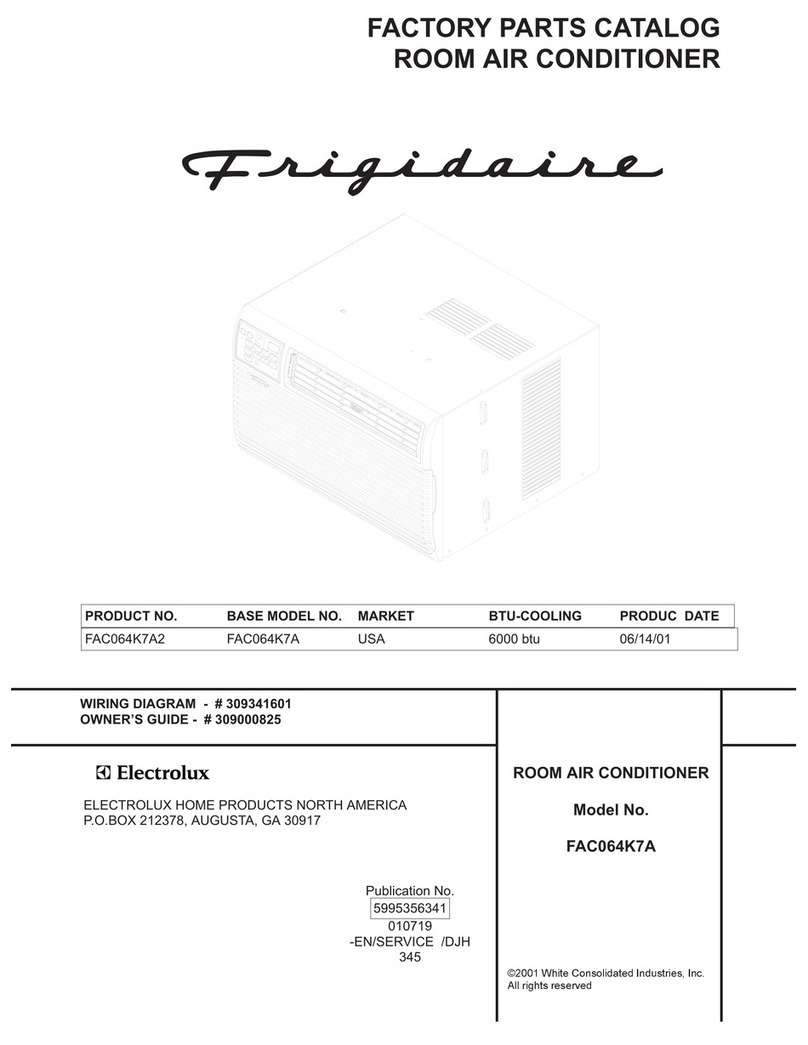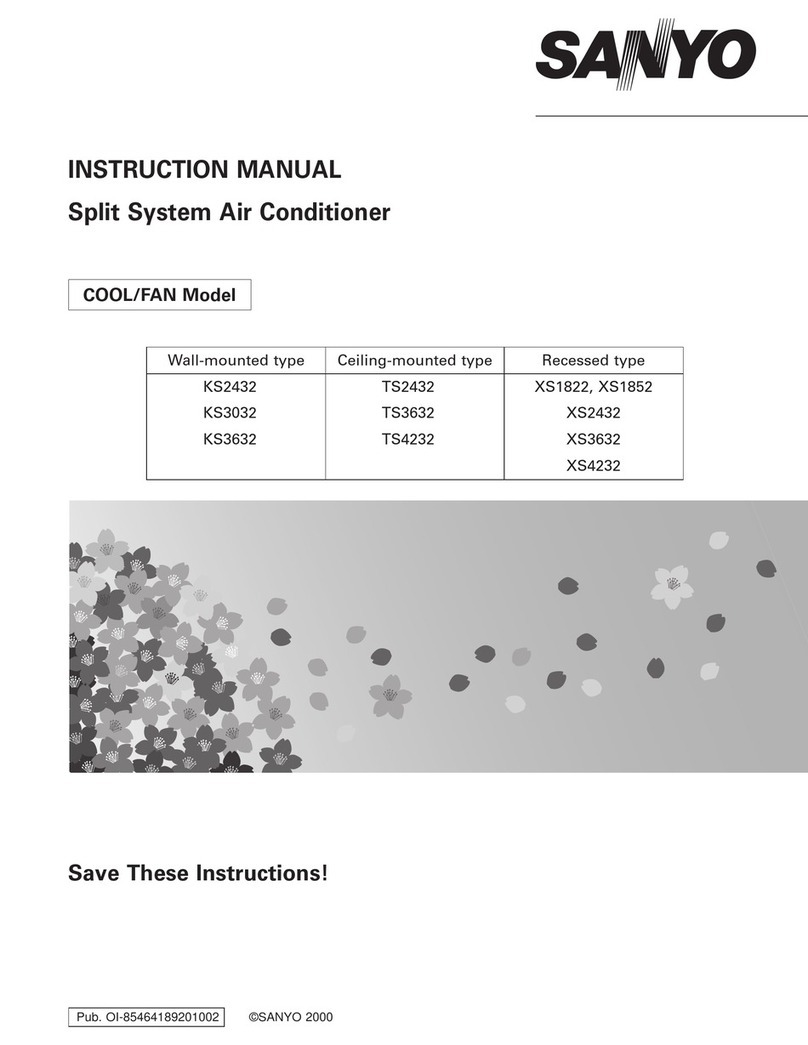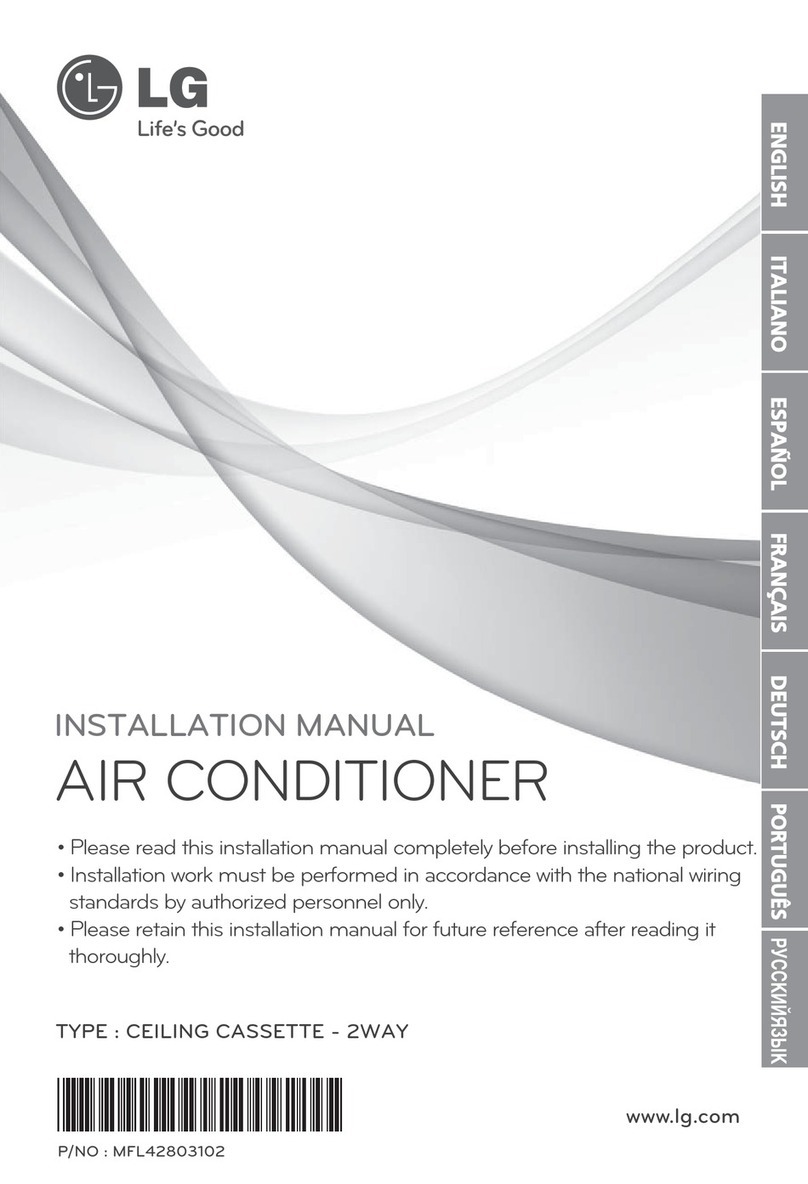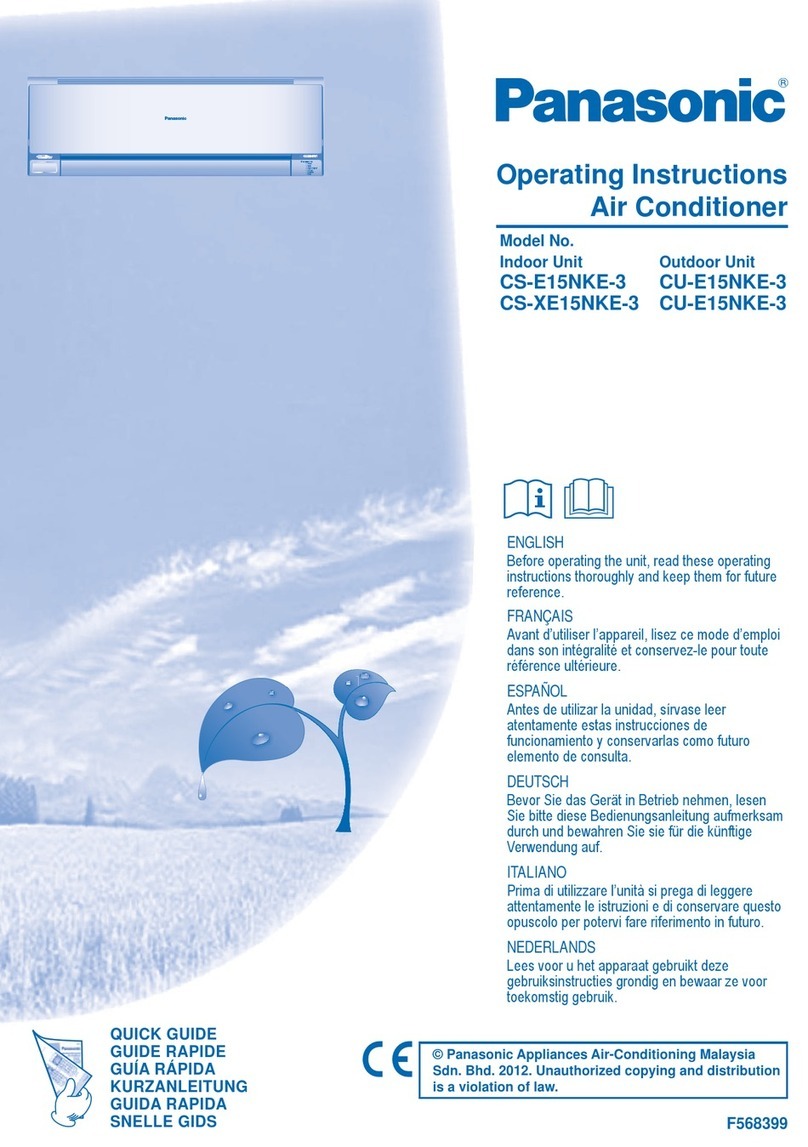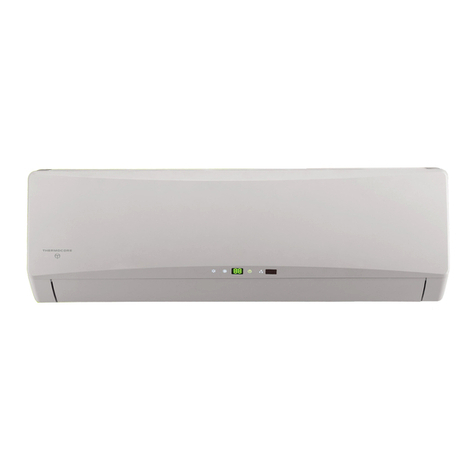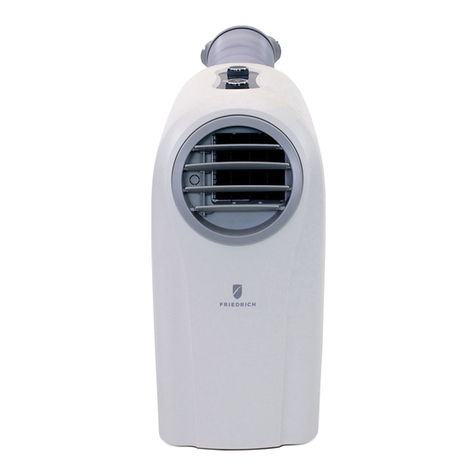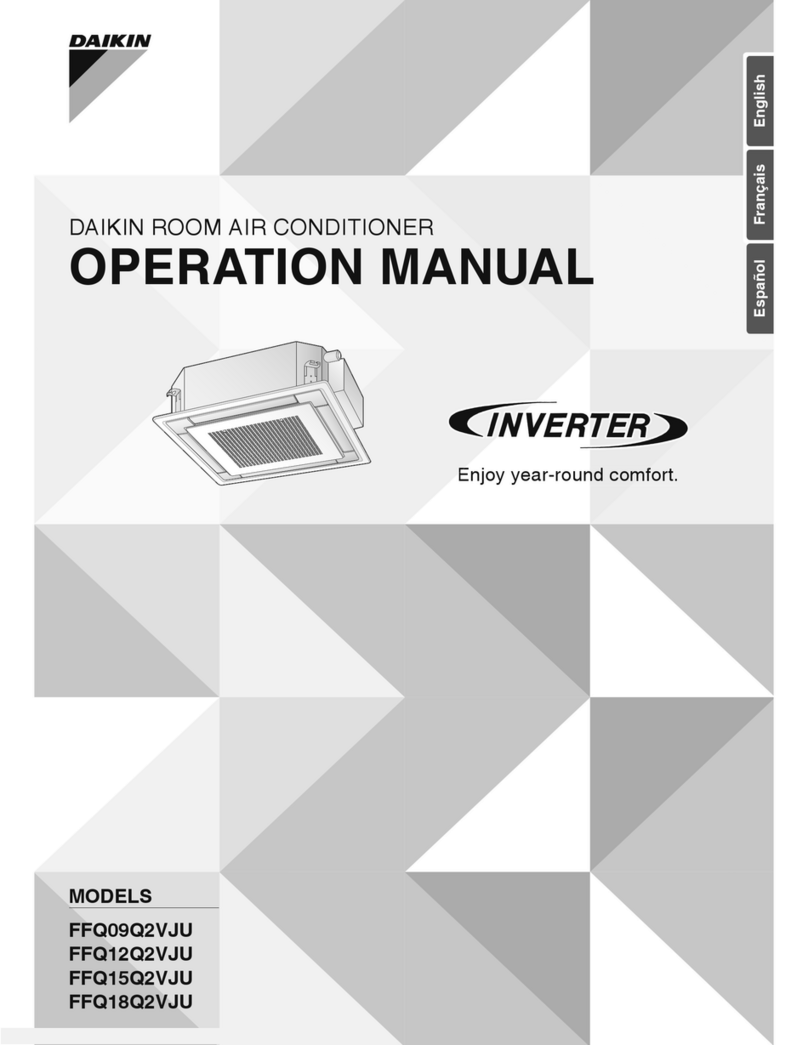
ELECTRICALSHOCK HAZARD
Failure to follow this warning could result in personal
injury or death.
Before installing or servicing system, always turn off main
power to system and install lockout tag. There may be
more than one disconnect switch.
CUT HAZARD
Failure to follow this caution may result in personal injury.
Sheet metal parts may have sharp edges or burrs. Use care
and wear appropriate clothing.
These instructions cover minimum requirements and conform to
existing national standards and safety codes. In some instances,
these instructions exceed certain local codes and ordinances,
especially those that may not have kept up with changing
residential construction practices. We require these instructions as a
minimum for a safe installation.
INTRODUCTION
50ZH heat pump units are fully self-contained and designed for
outdoor installation. See Fig. 1. As shown in Fig. 2-4, units are
shipped in a horizontal-discharge configuration for installation on
a ground-level slab. All units can be field-converted to downflow
discharge configurations for rooftop applications with a
field-supplied plenum
RECEIVING AND INSTALLATION
Step 1 -- Check Equipment
IDENTIFY UNIT -- The unit model number and serial number
are stamped on the unit identification plate. Check this information
against shipping papers. Verify that unit voltage and amperage
listed on unit rating plate agree with power supplied for equipment.
INSPECT SHIPMENT -- Inspect for shipping damage while unit
is still on shipping pallet. If unit appears to be damaged or is torn
loose from its securing points, have it examined by transportation
inspectors before removal. Forward claim papers directly to
transportation company. Manufacturer is not responsible for any
damage incurred in transit.
Check all items against shipping list. Immediately notify the
nearest Carrier Air Conditioning office if any item is missing.
To prevent loss or damage, leave all parts in original packages until
installation.
Step 2 -- Provide Unit Support
SLAB MOUNT -- Place the unit on a rigid, level surface, suitable
to support the unit weight. The flat surface should extend
@proximately 2-in. (51 mm) beyond the unit casing on the 2
sides. The duct connection side and condensate drain connection
sides should be flush with the edge of the flat surface. A concrete
pad or a suitable fiberglass mounting pad is recommended.
A 6-in. wide gravel apron should be used around the flat surface to
prevent airflow blockage by grass or shrubs. Do not secure the unit
to the flat surface except where required by local codes.
The unit should be level to within 1/4 in. (6 mm) This is necessary
for the unit drain to flmction properly.
GROUND MOUNT -- The unit may also be installed directly on
the ground if local codes permit. Place unit on level ground
prepared with gravel for condensate discharge.
Step 3 -- Provide Clearances
The required minimum service clearances and clearances to
combustibles are shown in Fig. 2-4. Adequate ventilation and
condenser air must be provided.
The condenser fan pulls air through the condenser coil and
discharges it through the fan on the top cover. Be sure that the fan
discharge does not recirculate to the condenser coil. Do not locate
the unit in either a corner or under an overhead obstruction. The
minimum clearance under a partial overhang (such as a normal
house overhang) is 48 in. (1219 mm) above the unit top. The
maximum horizontal extension of a partial overhang must not
exceed 48 in. (1219 mm).
Do not place the unit where water, ice, or snow from an overhang
or roof will damage or flood the unit. The unit may be installed on
wood flooring or on Class A, B, or C roof covering materials.
IMPORTANT: Do not restrict outdoor airflow. An air restriction
at either the outdoor-air inlet or the fan discharge may be
detrimental to compressor life.
Step 4-- Place Unit
[]nit can be moved with the handholds provided in the unit
basepan. Refer to Table 1 for operating weights. Use extreme
caution to prevent damage when moving the unit. []nit must
remain in an upright position during all moving operations. The
unit must be level for proper condensate drainage; the
ground-level pad must be level before setting the unit in place.
When a field-fabricated support is used, be sure that the support is
level and that it properly supports the unit.
Step 5 -- Select and Install Ductwork
The design and installation of the duct system must be in
accordance with:
• the standards of the NFPA (National Fire Protection Association)
for installation of nonresidence-type air conditioning and
ventilating systems;
• NFPA90A or residence-type, NFPA90B; and/or local codes and
residence-type, NFPA 90B;
• and/or local codes and ordinances.
Select and size ductwork, supply-air registers and return-air grilles
according to ASHRAE (American Society of Heating,
Refrigeration, and Air Conditioning Engineers) recommendations.
Use the duct flanges provided on the supply- and return-air
openings on the side of the unit. See Fig. 2-4 for connection sizes
and locations. The 14-in. (356 mm) round duct collars (size
024-048 units) are shipped inside the unit attached to the indoor
blower. They are field-installed and must be removed from the
indoor cavity prior to start-up, even if they are not used for
installation.
INSTALL FLANGES FOR DUCTWORK CONNECTIONS
(50ZH060 ONLY) -- The 50ZH060 units are shipped with flanges
which must be field-installed on the unit.
To install unit flanges:
1. Five pieces of flange are shipped on the return-air opening
of the unit. Remove the flanges from the shipping position.
See Fig. 5. Screws are field-supplied.
2. One piece of flange is used as it is shipped (straight). Bend
the other 4 pieces at right angles.
3. Install the straight flange on the right side of the return-air
opening in holes provided. (See Fig. 6.) Flanges should
stick out from unit to allow for connection of ductwork.
4. Install 2 hand-formed flanges onto return air opening in
holes provided to form a rectangle around the return air
opening.
5. Install remaining 2 hand-formed flanges around discharge
air opening in holes provided.
6. Ductwork can now be attached to flanges.
